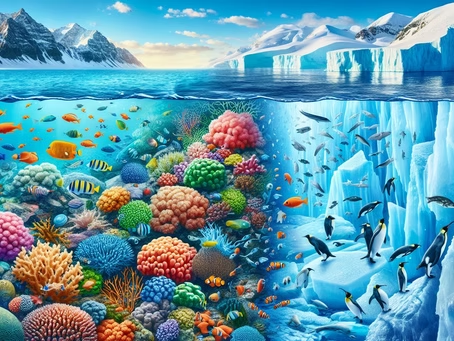Introduction
Marine ecosystems, from vibrant coral reefs to icy polar habitats, face increasing threats from human activity and climate change. Protecting these environments is crucial not only for the countless species that inhabit them but also for the overall health of our planet. This article highlights key marine conservation hotspots, explores the work of dedicated organizations, and outlines strategies shaping the future of our oceans.
Diving into Coral Reef Conservation
Reef Check: Citizen Science in Action
Reef Check empowers divers and snorkelers to become citizen scientists, monitoring reef health and reporting data that guides global conservation efforts.
- Complete the Marine Citizen Science Certificate course
- Join REEF’s Fish ID training to identify local marine life
- Record discoveries with the iNaturalist Tide Pool Program
Beyond data collection, Reef Check builds a worldwide community of ocean advocates, proving that individual actions collectively make a difference.
Reef Relief’s Mission
Reef Relief blends science and advocacy to restore coral reefs through education, restoration projects, and policy initiatives. By engaging communities and decision-makers, they ensure coral reefs—often called underwater rainforests—remain resilient for future generations.
Global Coral Reef Alliance
The Global Coral Reef Alliance unites scientists, divers, and conservationists in the fight to preserve coral ecosystems. Their initiatives include:
- Monitoring reef health and launching restoration projects
- Researching marine diseases and pollution impacts
- Advocating for sustainable practices and global awareness
Community involvement lies at the heart of their mission, ensuring reef conservation becomes a shared global responsibility.
Protecting Polar Habitats
Polar Bears International
Polar Bears International champions Arctic conservation through research, stewardship, and education. Their work blends scientific study with community engagement to safeguard polar bear populations and the sea ice they depend on.
Mapping Biodiversity in Polar Regions
Beneath the ice lies an intricate ecosystem teeming with life—from zooplankton to marine mammals. By mapping species diversity, scientists gain insights into ecosystem health and identify priority areas for protection.
- Marine invertebrates such as sponges and mollusks
- Arthropods, cnidarians, and echinoderms
- Marine vertebrates including fish, birds, and mammals
This data informs conservation strategies at a time when climate change poses unprecedented threats to polar biodiversity.
Leading Marine Conservation Organizations
MarineBio
Since 1998, MarineBio has fostered ocean conservation through education and community engagement. Their platform inspires new generations of marine biologists while offering over 100 ways for individuals to support ocean protection.
Greenpeace International
Greenpeace fights industrial threats such as overfishing, illegal practices, and whaling. Their campaigns mobilize millions to advocate for:
- Global marine reserves
- Ocean-friendly alternatives to destructive industries
- Stronger policies protecting vulnerable marine ecosystems
The Role of Marine Protected Areas
Marine Protected Areas (MPAs) safeguard biodiversity, support fisheries, and provide living laboratories for research. Successful MPAs rely on effective management, community involvement, and consistent monitoring.
Addressing Key Challenges
Endangered Species
Overfishing, pollution, and habitat loss drive marine species toward extinction. Conservation organizations work tirelessly to reverse this decline, but public support and sustainable choices remain vital.
Invasive Species
Invasive alien species disrupt marine ecosystems. Groups like the IUCN Invasive Species Specialist Group coordinate global knowledge-sharing, early detection, and control strategies to mitigate these threats.
Noise Pollution
Human-made noise disrupts marine life communication and navigation. Organizations like Ocean Conservation Research advocate for quieter ship designs, better regulations, and public education to preserve natural soundscapes.
Innovative Conservation Approaches
Sustainable Aquaculture
Responsible aquaculture practices reduce pressure on wild fisheries and promote food security, all while preserving ecosystem balance.
Artificial Reefs
Decommissioned ships and structures become thriving artificial reefs, providing habitat for marine life and boosting ecotourism while supporting biodiversity.
Coral Restoration
Techniques such as coral fragmentation and transplantation revive degraded reefs. Organizations like Reef Relief and the Global Coral Reef Alliance lead these restoration initiatives, proving that reefs can rebound with human support.
Building a Sea Ethic
Marine conservation is not only science-driven but also rooted in ethics. By fostering respect for the ocean and integrating sustainability into daily choices, communities and individuals can drive meaningful change.
Conclusion
From coral reefs to polar seas, conservation organizations are building a global movement to protect marine biodiversity. Yet, the responsibility does not rest on them alone. Every individual can contribute—through sustainable consumption, advocacy, or citizen science. Together, we can ensure the ocean’s symphony of life endures for generations to come.

